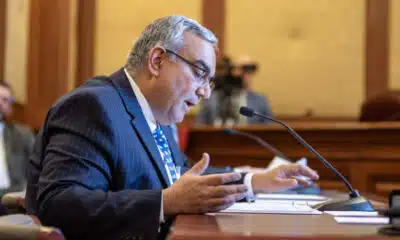(The Center Square) – Consumer prices increased more than expected in June as Americans face higher prices on a wide range of imported goods as President Donald Trump’s tariffs show up in federal economic reports for the first time.
The Consumer Price Index for All Urban Consumers, or CPI-U, showed a 0.3% increase last month – triple May’s 0.1% pace and the most significant monthly gain since January, when Trump returned to the White House for his second term.
On an annual basis, inflation was at 2.7%, up from 2.4% in May. That’s above the 2.6% yearly gain economists had projected for June. Core CPI, which excludes fast-moving food and energy prices, rose 0.2% over the month and 2.9% over the past year. That was in line with forecasts.
“Indexes that increased over the month include household furnishings and operations, medical care, recreation, apparel, and personal care,” the U.S. Bureau of Labor Statistics reported Tuesday. “The indexes for used cars and trucks, new vehicles, and airline fares were among the major indexes that decreased in June.”
According to the report, the index for shelter rose 0.2% in June and was the primary factor in the monthly increase for all items.
Brian Wesbury, chief economist at First Trust LP, said tariffs weren’t to blame.
“Core CPI up just 0.2%. But, year-ago comparisons are tough and the year-over-year ‘core’ rose slightly to 2.9%,” he wrote in a post on X. “Better to look at 3-month annualized changes. The 3-month annualized increase was just 2.4%, down from 3.6% in February. Tariffs don’t cause inflation.”
Jason Furman, a Harvard professor who spent eight years as a top economic adviser to former President Barack Obama, said tariffs were the cause.
“You can see signs of tariffs in these numbers and that is only likely to grow,” he said.
Justin Wolfers, a professor of public policy and economics at the University of Michigan, was more neutral about the report.
“These numbers are pretty much in line with expectations,” he wrote on X. “The absence of bad news is good news.”
White House Press Secretary Karoline Leavitt said the report shows that tariffs aren’t raising prices.
“Every month since President Trump took office, core inflation – the best measure of inflation – has beat or matched expectations,” she said. “The data proves that President Trump is stabilizing inflation and the Panicans continue to be wrong about tariffs raising prices.”




















































